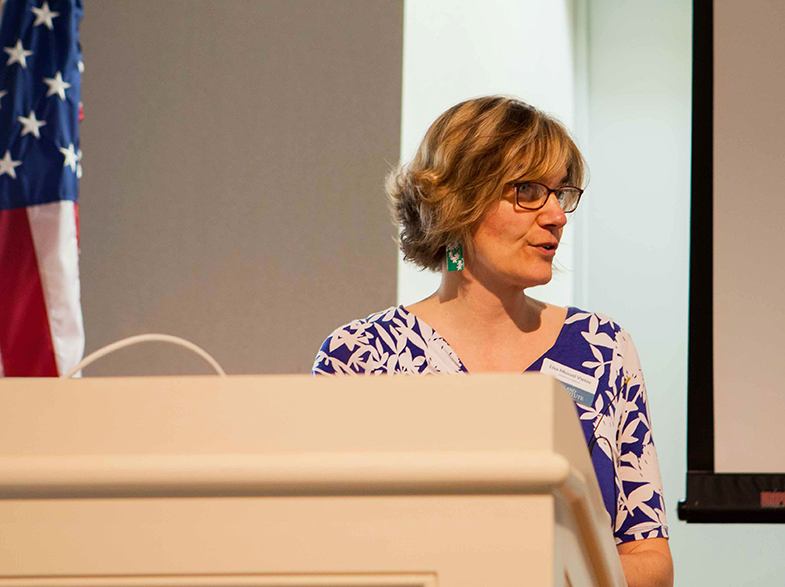“There is nothing worse than a sharp image of a fuzzy concept.” – Ansel Adams
In my role as director of Archipelago, the Island Institute’s store and gallery, I’ve seen many artists come through the door wanting to know the nuts and bolts of starting or growing a business. Artists bring in their portfolio, product, or both, and want opinions on pricing, market, or feedback on their work. While this is great, sometimes I need to ask them to step back in order to move forward successfully.
For me, one of the first things I notice is do they know who they are? Do they have a voice? Does their work or product reflect a strong voice? Is it unique? Have they given thought to presentation? Answering ‘yes’ to these questions, means they are better set up for successfully running an arts-related business, and this is true whether they’re making soap, chocolate bars, or painting large canvases.
Here are some tips for how you can find and nurture their own unique voice to help tell your story and build your business.
Importance of Voice
For whatever product you’re selling and whatever business you’re starting or growing—you’ll need to find customers. Telling a good story draws like-minded customers to you, and that all starts with your voice. If you want to do more than make soap or paint as a hobby, then this is the first step and often diminished in its importance. When I meet with artists, I’m trying to pull out the pieces of their portfolio or product line that are strong and unique in voice. There are a lot of soap makers, jewelers and landscape painters and they are all your competitors – how are you different?
And, as a small business owner, you’ll need good time management, especially as an artist who owns a small business. So, voice is very important when setting yourself up for success in business. What do you want to be known for? Focusing will help you to eliminate distractions and key in on the right opportunities for your business. When creating a plan, it’s perfectly ok to have diverse channels to reach an audience, but they should all relate.
Notice in the above quote from Ansel Adams, is the phrase “sharp image.” So first, I’m assuming that you know your craft, art, or product inside and out, and you are working towards mastery. Your output is “sharp.”. If not, get to work! Take classes, become an apprentice, work in an artists’ space where you can learn process and technique from others.
How do you find your voice?
Not create, but find, recognize, and nurture. Your voice is always present but it takes time and energy to crystallize.
Know yourself
Do you like the prairie or the ocean? Are you drawn to colors or monochrome palettes? Sweet or salty? Texture or clean? Modern or bohemian? Classic rock or classical? What is your essence? What parts of you have always been there since the beginning? Your life experience is a big influence on you and therefore your business.
What about you sets you apart?
- Your personality
- Your past
- Your family
- Your artistic roots
- Your education
- Your life experience
- Your sense of place
- Your loves and losses
How much do you know about these aspects of yourself? And what do you still need to explore? Viewers will recognize the look of your artistic voice when they see your work because of common elements.
What about your work sets you apart? Questions to ask yourself:
- What features or processes make your work unique? What techniques or tools do you use?
- Medium?
- Genre?
- What/who are your influences?
- Themes?
- Mood or emotion?
- Format?
- Color palettes?
Draw from your own life experiences. They are uniquely yours. Again, if you’re a soap maker, what is special about you and what makes your soap different – does your sister supply the goat milk? Do you color it with natural dyes from your farm? Do you make it with your kids? Do you infuse it with salty scrub from your home’s beachfront?
Gather inspiration to strengthen your voice
Don’t just look at photography if you’re a photographer or pottery if you work in clay. Seek inspiration from all sources and mediums. Comb the streets, go to gardens, travel, try something new, and throw it all into the mix. Read, visit galleries, children’s art shows, notice what you like and what you’re drawn to.
Put everything into the mix. Some things will naturally fall away and some things you’ll hold on to tightly. You’ll need to figure that out for yourself. It’s your journey.
So circle around, and do this all again and again—and expect to do it constantly. As your life experiences change, so will your work.


